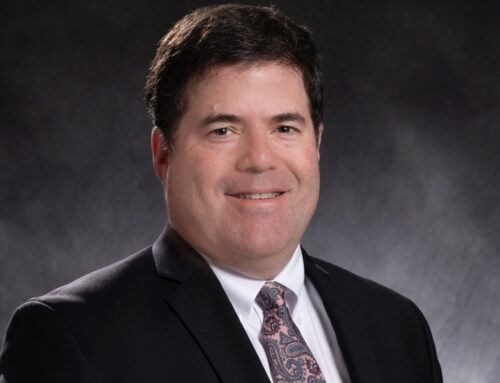By: Scott Borsack
Sometime before May 14, 2020 the Small Business Administration (the “SBA”) will issue new rules which some Paycheck Protection Program (“PPP”) borrowers will have to act upon before the clock strikes midnight and the calendar turns to May 15, 2020. Specifically, the SBA will be speaking to whether borrowers needed their PPP loans in the first instance because of their financial condition and that those in a stronger position should not have applied for a PPP loan. First some background.
On April 23, 2020 the SBA and Treasury released guidelines in the form of questions and answers to guide borrowers and their advisors through the process of applying for loans under the PPP. After media attention to loans to the Los Angeles Lakers, Ruth’s Chris Steakhouse and Shake Shack, Treasury tried to rewrite the CARES Act and the PPP creating new limitations after the game started. The now famous Q&A 31 was issued causing confusion. We thought there would be further guidance but were unsure of what it might be.
For those who may not have come across it, Q&A 31 provided as follows:
- Question: Do businesses owned by large companies with adequate sources of liquidity to support the business’s ongoing operations qualify for a PPP loan?
Answer: In addition to reviewing applicable affiliation rules to determine eligibility, all borrowers must assess their economic need for a PPP loan under the standard established by the CARES Act and the PPP regulations at the time of the loan application. Although the CARES Act suspends the ordinary requirement that borrowers must be unable to obtain credit elsewhere (as defined in section 3(h) of the Small Business Act), borrowers still must certify in good faith that their PPP loan request is necessary. Specifically, before submitting a PPP application, all borrowers should review carefully the required certification that “[c]urrent economic uncertainty makes this loan request necessary to support the ongoing operations of the Applicant.” Borrowers must make this certification in good faith, taking into account their current business activity and their ability to access other sources of liquidity sufficient to support their ongoing operations in a manner that is not significantly detrimental to the business. For example, it is unlikely that a public company with substantial market value and access to capital markets will be able to make the required certification in good faith, and such a company should be prepared to demonstrate to SBA, upon request, the basis for its certification. Lenders may rely on a borrower’s certification regarding the necessity of the loan request. Any borrower that applied for a PPP loan prior to the issuance of this guidance and repays the loan in full by May 7, 2020 will be deemed by SBA to have made the required certification in good faith. (Emphasis added)
The marketplace obviously took the SBA at face value and assumed that private companies without access to capital markets had less to fear here than the publicly traded companies with private equity investors or other channels to sophisticated capital investments. Enter new Q&A 37.
On April 28 the SBA issued a new Q&A 37 which was intended to create more unrest. Now not only were public companies potentially in the crosshairs, but privately held companies had reason to be concerned. The new Q&A provided that:
- Question: Do businesses owned by private companies with adequate sources of liquidity to support the business’s ongoing operations qualify for a PPP loan?
Answer: See response to FAQ #31.
What is the SBA telling us here? Do they mean to suggest that private companies and public companies are on the same footing? For public companies the SBA told us that those with substantial value and access to capital markets should not have applied. Are private companies, regardless of size, now suspect as well? Must they have access to capital markets or have substantial value as well to be suspect? What is meant by adequate liquidity and when is it determined? Does a company sitting on cash that is destined for a creditor or taxing authority have momentary adequate liquidity? Does a company with a line of credit have adequate liquidity? Does it make sound business sense for a private company to draw on its line of credit to pay employees when its economic forecast shows significant reversals? Should an employer simply allow its employees to proceed for state unemployment? Wasn’t that the option that Congress was trying to avoid? Does Treasury want anyone to keep PPP loans?
Q&A 37 did nothing but create more questions. I think the SBA knew there were more questions than answers because on May 5, 2020 the SBA issued Q&A 43 which provided:
- Question: FAQ #31 reminded borrowers to review carefully the required certification on the Borrower Application Form that “[c]urrent economic uncertainty makes this loan request necessary to support the ongoing operations of the Applicant.” SBA guidance and regulations provide that any borrower who applied for a PPP loan prior to April 24, 2020 and repays the loan in full by May 7, 2020 will be deemed by SBA to have made the required certification in good faith. Is it possible for a borrower to obtain an extension of the May 7, 2020 repayment date?
Answer: SBA is extending the repayment date for this safe harbor to May 14, 2020. Borrowers do not need to apply for this extension. This extension will be promptly implemented through a revision to the SBA’s interim final rule providing the safe harbor. SBA intends to provide additional guidance on how it will review the certification prior to May 14, 2020.
Then on May 8, 2020 the SBA published a comment in its fourth round of Interim Final Guidance acknowledging what many suspected when the repayment date was suddenly extended. More rules are coming just in time for consideration before the May 14, 2020 repayment deadline. The SBA announced that:
SBA, in consultation with the Department of the Treasury, will issue additional guidance before May 14, 2020 concerning how SBA will review the required certification to help PPP borrowers evaluate whether they may have misunderstood or misapplied the statutory certification standard. Based on this upcoming guidance, SBA, in consultation with the Department of the Treasury, determined that it is necessary and appropriate to extend the safe harbor deadline for repaying PPP loans from May 7, 2020 to May 14, 2020. (emphasis added).
So with a few days to spare, the SBA will tell borrowers in the next few days how to determine whether they should return the PPP loan which some received several weeks ago and have begun to spend. Presumably SBA will explain the penalties it will pursue for failing to return money that should not have been loaned in the first instance.
Keep your eyes on this page over the next several days. We will likely host a webinar to discuss the rules once they are available hopefully allowing borrowers enough time to make a decision.
Join me on Tuesday, May 12, 2020 at 2:00 PM as I try to bring further clarification to the Paycheck Protection Program loan forgiveness in a special webinar presentation. Click here to register.
Please note that the content of this blog is provided for information and education only. Nothing stated herein is intended to create an attorney client relationship or to constitute legal advice.
Scott Borsack is a partner with Szaferman Lakind and chair of the Business Department. To contact Scott please email him at sborsack@szaferman.com or call 609.275.0400.






